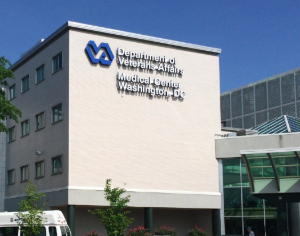What’s the difference between a restaurant and the federal government?
You have a choice of restaurants, and that puts pressure on them to improve. Restaurants have to worry about whether you like their food and whether they’re giving you a good experience. In contrast, there is only one federal government, and maybe that’s why it hasn’t always done the best job thinking about how it can better serve its customers.
But under the Trump administration, that’s about to change. President Trump has put forward an ambitious agenda to modernize the government in a way that focuses on outcomes that real people care about. These outcomes include accomplishing tasks to keep Americans safe and secure, the smart use of taxpayer funds, and a vast improvement in the level of customer service people receive when they deal with the federal government.
I’m proud that the Department of Veterans Affairs is leading the way. We know something about competing for customers because most veterans have a choice of health care options, and many choose the VA. The MISSION Act enshrined even greater flexibility for veterans.
That greater choice has forced the VA to ask itself some tough questions. Are we adequately serving the veterans who walk through our doors? Are they getting access to care quickly enough? What are veterans’ other complaints, and how can we address them?
Getting the answers to these questions has helped us improve. Our Veterans Experience Office systematically gathers data on veterans’ experiences at the VA and uses it as a guide to what’s working well and what needs to be fixed. I personally acted to make sure customer service is a priority for the department by approving a change in our regulations that makes customer service a permanent part of VA’s core values.
Internal data shows our effort is making a difference. We have completed more than a million additional medical appointments in the first nine months of the current fiscal year compared to the prior year, and we are seeing reduced wait times for primary care and mental health appointments.
Our effort has led to more trust from veterans. Recent outpatient surveys show that about 87 percent of veterans asked trust the VA to deliver the care they need. That incredibly high number confirms something that anyone who’s ever been to a great restaurant knows: if you pay attention to the customer, the customer has a better experience.
As a next step, the White House is looking to export the VA’s customer service effort to the rest of the government. The Office of Management and Budget has identified the 25 federal entities that account for the most interaction with American citizens — taken together, these entities touch every American in the country. OMB is already working with these entities to replicate the VA’s customer service success, developing ways to receive customer feedback and using that feedback to improve the way they deliver services.
Later this summer, the administration will unveil a new dashboard on Performance.gov that will show the public how these agencies and departments are performing. The results may reveal some problem areas, but that’s part of the process: using customer data to show where government is falling short and then working to make improvements where needed.
What does it all mean for real people? It means that soon the IRS will have an incentive to understand the problems people face when they file their taxes and to fix those problems. It means the Transportation Security Administration will be using customer feedback to improve airport screening procedures. It means an opportunity for the government to treat farmers, patent applicants, student borrowers, importers, Social Security recipients and many others like customers — by listening to their needs and making their interaction with the government faster, more efficient and more satisfying.
At the core of the president’s initiative is a simple premise: Americans pay for this government and they deserve effective, easy and friendly interactions with it.
Delivering that result won’t be easy. It will require a cultural change within the government. But we believe it can be done, one interaction at a time, because we’ve seen it work at the VA, and we know it can be replicated if the government does what any good restaurant does: listen to its customers.

